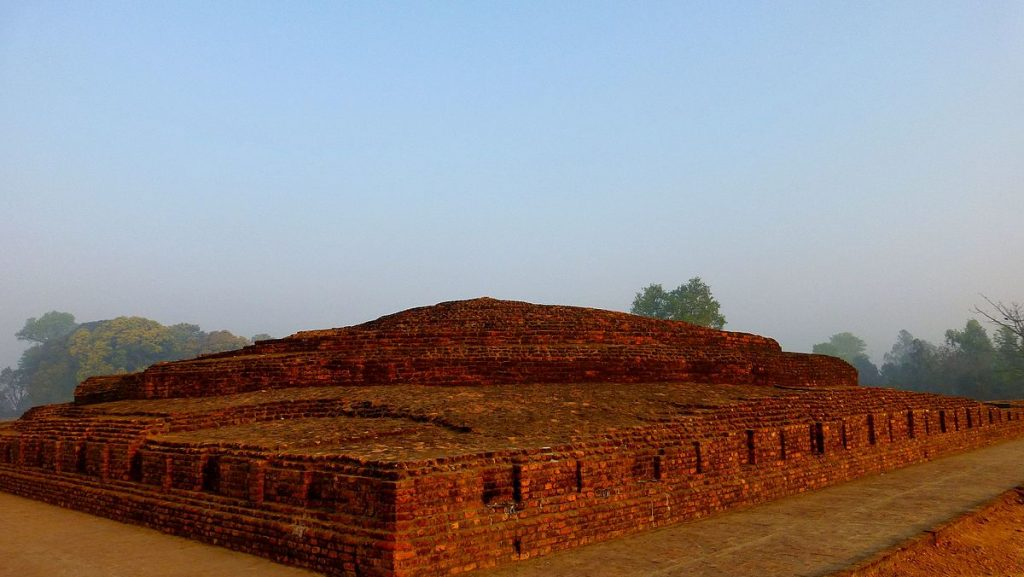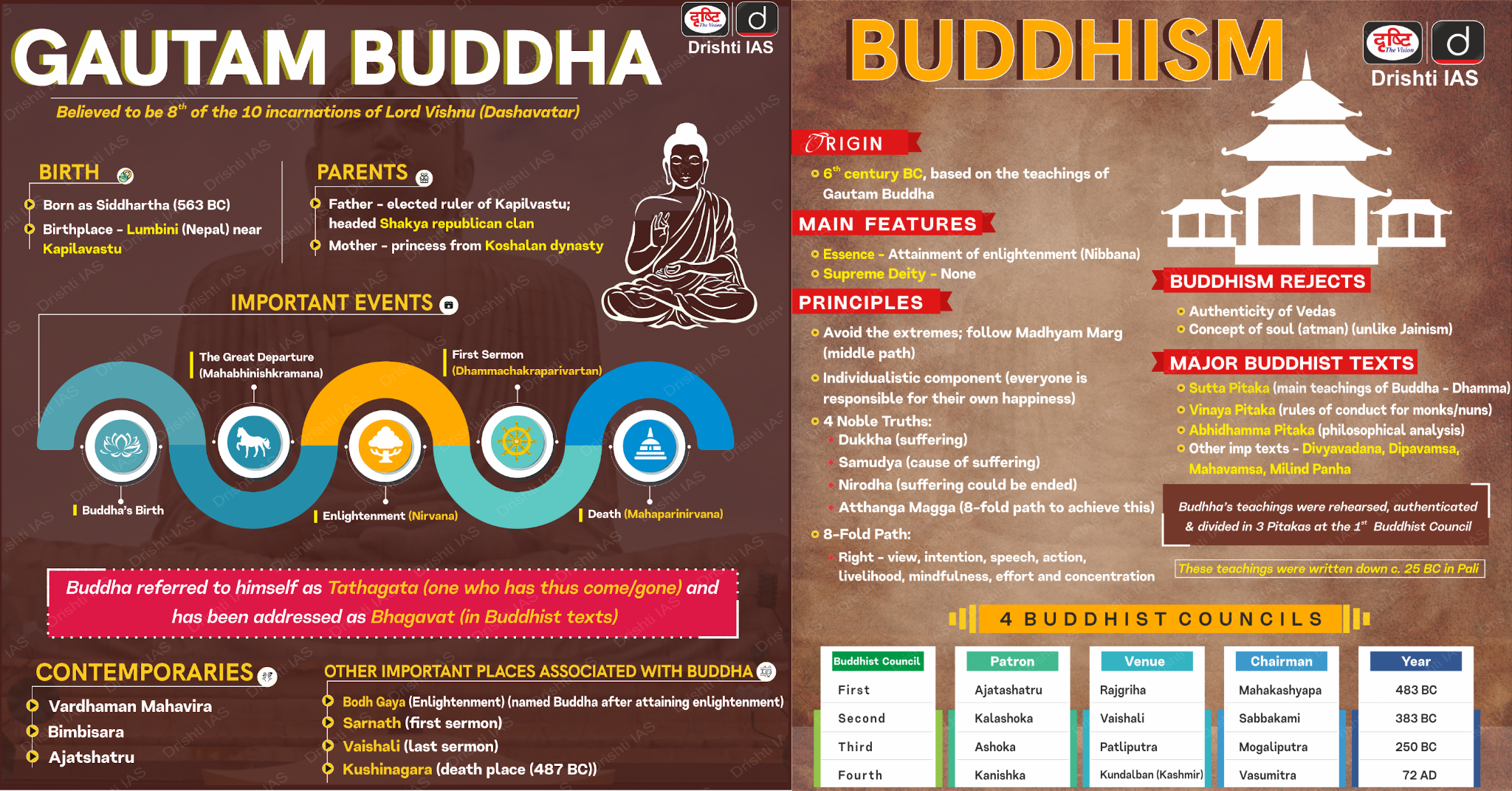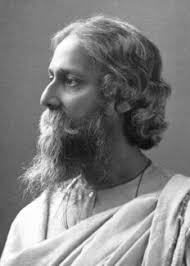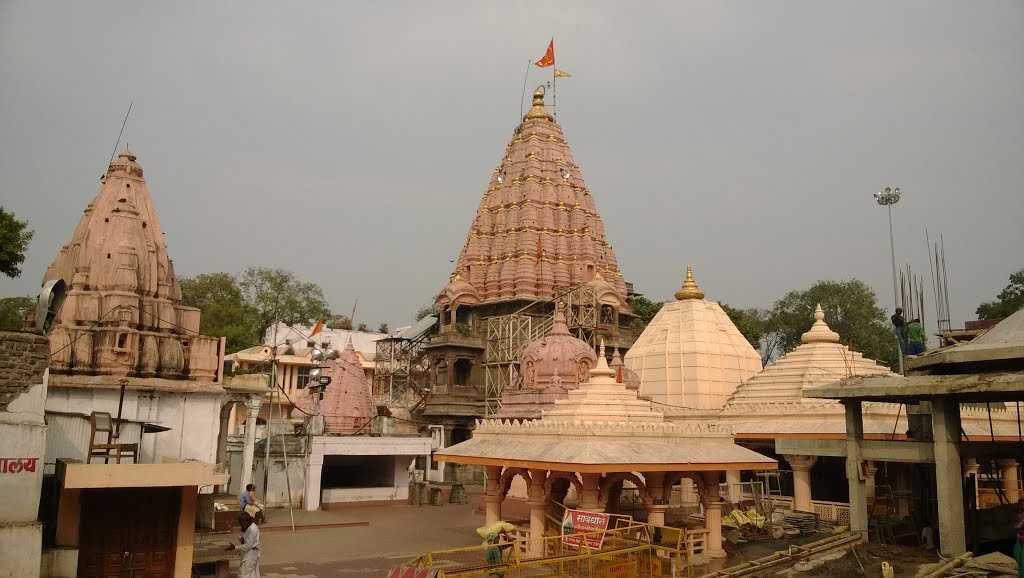Maharashtra Switch to Hindi
One State One Registration Policy
Why in News?
On 1 May 2025, the Maharashtra government launched the “One State, One Registration” scheme, enabling citizens to register property documents at any sub-registrar office across the state, irrespective of the property's location.
Key Points
- About the Policy:
- The state government introduced the policy to eliminate the restriction of registering property documents only in the area where the property is located.
- Earlier, buyers had to register property only at the local sub-registrar’s office, even if it was overcrowded or difficult to reach, leading to delays and inconvenience.
- The move simplifies property transactions in high-activity zones like Mumbai, Pune, and Thane, where real estate deals are frequent.
- NRIs, senior citizens, legal professionals, and real estate agents will particularly benefit from the flexibility and time saved.
- The state government introduced the policy to eliminate the restriction of registering property documents only in the area where the property is located.
- Tech Upgrades:
- The National Informatics Centre (NIC) is helping modernise backend systems with advanced tech like:
- Geographic Information Systems (GIS)-based e-measurements
- Drone-based land mapping
- Blockchain-enabled land records
- These upgrades aim to:
- Improve accuracy in records
- Speed up transactions
- Prevent fraud, duplication, and property disputes
- The National Informatics Centre (NIC) is helping modernise backend systems with advanced tech like:
National Informatics Centre
- NIC provides network backbone and e-Governance support to the Central Government, State Governments and UT Administrations.
- NIC has been closely associated with the Government in different aspects of Governance besides establishing a Nationwide State-of-the-Art information and communication technology (ICT) Infrastructure.
- It has also built a large number of digital solutions to support the government at various levels, making the last-mile delivery of government services to the citizens a reality.
- It is under the aegis of the Ministry of Electronics and Information Technology.
- It was established in 1976 and is located in New Delhi.
Haryana Switch to Hindi
SC Warns to Ensure Ban on Firecrackers
Why in News?
On 6 May 2025, the Supreme Court directed the governments of Uttar Pradesh, Rajasthan, and Haryana to strictly enforce the firecracker ban in NCR areas and warned that any failure to comply would invite contempt action.
Key Points
- Instructions by the Court:
- The Court instructed the states to issue directions under Section 5 of the Environment Protection Act (EPA) to implement the ban.
- Section 5 empowers the Central Government to instruct any authority or officer to act for environmental protection.
- The Bench emphasized that both the Court’s earlier orders and the EPA directives must be strictly enforced by state law enforcement agencies.
- Strict Implementation:
- The Court demanded “scrupulous implementation” of the ban and asked states to set up dedicated enforcement mechanisms.
- It warned that any failure by officials or authorities to implement the orders could lead to contempt proceedings under the Contempt of Courts Act, 1971.
- The Bench ordered all NCR states to submit compliance affidavits and to widely publicize the ban and related penalties.
- Previous Directives:
- In December 2024, the Court had already directed Uttar Pradesh and Haryana to impose a complete ban on firecrackers until further notice.
- It acknowledged that Delhi had implemented a round-the-year ban on all firecracker-related activities, including online deliveries.
- The Bench called for uniformity in enforcement across NCR, noting that Rajasthan had already imposed a similar ban in its NCR regions.
- The Court stressed that bans are effective only if all NCR states enforce them together.
- In December 2024, the Court had already directed Uttar Pradesh and Haryana to impose a complete ban on firecrackers until further notice.
Environment (Protection) Act
- About:
- It was enacted in 1986 with the objective of providing the protection and improvement of the environment.
- It empowers the Central Government to establish authorities charged with the mandate of preventing environmental pollution in all its forms and to tackle specific environmental problems that are peculiar to different parts of the country.
- The Act is one of the most comprehensive legislations with a pretext to protection and improvement of the environment.
- Background:
- The roots of the enactment of the EPA lies in the United Nations Conference on the Human Environment held at Stockholm in June, 1972 (Stockholm Conference), in which India participated, to take appropriate steps for the improvement of the human environment.
- The Act implements the decisions made at the Stockholm Conference.
- The roots of the enactment of the EPA lies in the United Nations Conference on the Human Environment held at Stockholm in June, 1972 (Stockholm Conference), in which India participated, to take appropriate steps for the improvement of the human environment.
- Constitutional Provisions:
- The EPA Act was enacted under Article 253 of the Indian Constitution which provides for the enactment of legislation for giving effect to international agreements.
- Article 48A of the Constitution specifies that the State shall endeavour to protect and improve the environment and to safeguard the forests and wildlife of the country.
- Article 51A further provides that every citizen shall protect the environment.
Contempt of Court
- About:
- Contempt of court seeks to protect judicial institutions from motivated attacks and unwarranted criticism, and as a legal mechanism to punish those who lower its authority.
- Statutory Basis:
- When the Constitution was adopted, contempt of court was made one of the restrictions on freedom of speech and expression under Article 19 (2) of the Constitution of India.
- Separately, Article 129 of the Constitution conferred on the Supreme Court the power to punish contempt of itself. Article 215 conferred a corresponding power on the High Courts.
- The Contempt of Courts Act, 1971, gives statutory backing to the idea.
Uttar Pradesh Switch to Hindi
Piprahwa Relics
Why in News?
The Central Government has launched a strong diplomatic and legal campaign to stop Sotheby’s in Hong Kong from auctioning the sacred Piprahwa Relics, which are believed to be the remains of Lord Buddha.
Key Points
- About Piprahwa Relics:
- Excavators discovered the Piprahwa Relics in 1898 at the Piprahwa Stupa in Uttar Pradesh, believed to be ancient Kapilavastu, the birthplace of Lord Buddha.
- The relics include bone fragments, crystal caskets, gold ornaments, and other ritual offerings.
- An inscription in Brahmi script on one casket links the relics directly to Lord Buddha, stating they were deposited by the Sakya clan.
- Legal Protection of the Relics:
- India classifies the relics as ‘AA’ antiquities, granting them the highest level of legal protection under national law.
- Indian law prohibits their sale or export, making any attempt to auction or remove them illegal.
- While most relics were handed to the Indian Museum, Kolkata in 1899, descendants of British excavator William Claxton Peppé retained some relics, now surfacing in the auction market.
- India’s Immediate Action:
- After learning of the proposed Sotheby’s auction in Hong Kong, the Ministry of Culture issued a legal notice demanding an immediate halt.
- The Archaeological Survey of India (ASI) contacted India’s Consulate General in Hong Kong to seek intervention.
Kapilavastu Relics:
- The discovery of an inscribed casket in 1898 at the stupa site in Piprahwa (near UP’s Siddharthnagar) helped identify the place with the ancient Kapilavastu.
- The inscription on the casket's lid refers to the relics of Buddha and his community, the Sakya.
- A further excavation of the stupa by the Archaeological Survey of India in 1971-77 brought to light two more steatite relic caskets, containing a total of 22 sacred bone relics, which are now under the care of the National Museum.
- This was followed by the discovery of more than 40 terracotta sealings from different levels and spots in the eastern monastery at Piprahwa, establishing that Piprahwa was the ancient Kapilavastu.
West Bengal Switch to Hindi
Rabindranath Tagore Jayanti 2025
Why in News?
Rabindranath Tagore Jayanti is celebrated every year on the 25th day of Boishakh, the Bengali month that usually falls in early May and is fondly known as Pochishe Boishakh.
Key Points
- Birth:
- He was born in Calcutta on 7th May 1861.
- About:
- He was also referred to as ‘Gurudev’, ‘Kabiguru’, and ‘Biswakabi’
- He is regarded as the outstanding creative artist of modern India and hailed by W.B Yeats, Rabindranath Tagore was a Bengali poet, novelist, and painter, who was highly influential in introducing Indian culture to the west.
- He was an exceptional literary figure and a renowned polymath who singlehandedly reshaped the region's literature and music.
- He was a good friend of Mahatma Gandhi and is said to have given him the title of Mahatma.
- He had always stressed that unity in diversity is the only possible way for India’s national integration.
- He had spoken at the World Parliament for Religions in the years 1929 and 1937.
- Contributions:
- He is said to have composed over 2000 songs and his songs and music are called ‘Rabindra Sangeet’ with its own distinct lyrical and fluid style.
- He is responsible for modernising Bengali prose and poetry. His notable works include Gitanjali, Ghare-Baire, Gora, Manasi, Balaka, Sonar Tori, He is also remembered for his song ‘Ekla Chalo Re’.
- He published his first poems aged 16 under the pen-name ‘Bhanusimha’.
- He not only gave the national anthems for two countries, India and Bangladesh, but also inspired a Ceylonese student of his, to pen and compose the national anthem of Sri Lanka.
- Besides all his literary achievements he was also a philosopher and educationist who in 1921 established the Vishwa-Bharati University, a university that challenged conventional education.
- Awards:
- In 1913 he was awarded the Nobel Prize in Literature for his work on Gitanjali.
- He was the first non-European to receive the Nobel Prize.
- In 1915 he was awarded knighthood by the British King George V. In 1919, following the Jallianwalla Bagh massacre he renounced his Knighthood.
- In 1913 he was awarded the Nobel Prize in Literature for his work on Gitanjali.
- Death:
- He died on 7th August 1941 in Calcutta.
Pochishe Baisakh
- It means the first day of Baisakh, the opening month of the Bengali lunisolar calendar which typically falls on 14th or 15th April each year.
- It traces back to the reign of King Shoshangko (~594 CE), when the Bengali calendar was introduced.
- It is an important festival celebrated by Bengali communities across West Bengal, Tripura, Jharkhand, and Assam. It is also celebrated in Bangladesh.
Rajasthan Switch to Hindi
Power Purchase Agreement with RVUNL
Why in News?
NLC India Renewables Limited (NIRL), a wholly owned subsidiary of NLC India Ltd. (NLCIL), has signed a Power Purchase Agreement (PPA) with Rajasthan Rajya Vidyut Utpadan Nigam Limited (RVUNL) for its planned 810 MW solar power project.
Key Points
- Project Significance:
- The solar power plant will be located at Pugal Solar Park in Bikaner district, Rajasthan.
- The site, situated on barren land, benefits from high solar radiation, making it ideal for solar energy production.
- This initiative is part of the Ministry of New and Renewable Energy’s Ultra Mega Renewable Energy Power Parks (UMREPP) scheme – Mode B, awarded through competitive tariff-based bidding.
- Environmental Impact:
- The project is expected to generate nearly 2 billion units of green electricity annually.
- It will offset about 1.5 million metric tonnes of CO₂ emissions per year, contributing to India’s low-carbon transition.
- Infrastructure and Development:
- The project will be developed within RVUNL’s 2000 MW Pugal Solar Park.
- It marks a milestone for NLCIL, the first CPSU in India to establish 1 GW of renewable energy projects.
Ultra-Mega Renewable Energy Power Parks (UMREPP) Scheme
- It is a scheme to develop Ultra Mega Renewable Energy Power Parks (UMREPPs) under the existing Solar Park Scheme.
- The scheme was rolled out by the Ministry of New & Renewable Energy (MNRE) in 2014.
- Solar Park Scheme is also a scheme of MNRE to set up a number of solar parks across various states in the country. It proposes to provide financial support by the Government of India to establish solar parks.
- The objective of the UMREPP is to provide land upfront to the project developer and facilitate transmission infrastructure for developing Renewable Energy (RE) based Power Parks with solar/wind/hybrid and also with storage systems.
Madhya Pradesh Switch to Hindi
Fire at Ujjain Mahakaleshwar Temple
Why in News?
On 5 May 2025, a fire engulfed the Mahakal Lok Corridor in the Mahakaleshwar Temple campus in Ujjain, Madhya Pradesh.
Key Points
- Mahakaleshwar Temple:
- Religious Significance:
- Mahakaleshwar Temple is dedicated to Lord Shiva and holds immense religious importance in Hinduism.
- It is one of the twelve Jyotirlingas—the most sacred abodes of Shiva.
- The idol of Mahakaleshwar is unique as it is Dakshina Mukhi (facing south), unlike other Jyotirlingas.
- Religious Significance:
- Location:
- The temple is situated in Ujjain, an ancient city in Madhya Pradesh.
- It lies beside the Rudra Sagar lake, enhancing its spiritual ambience.
- The temple complex spans five levels and draws huge crowds, especially during Maha Shivaratri.
- Architectural Features:
- The temple features a spacious courtyard adorned with intricate sculptures.
- Its design reflects Chalukya, Maratha, and Bhumija architectural styles.
- The foundation and platform are made of stone, while the upper structures rest on strong pillars and plasters.
- It houses lingam sculptures of Mahakaleshwar and images of Ganesh (west), Parvati (north), and Karttikeya (east) within the sanctum.
- A sarvatobhadra-style tank is also part of the temple complex.
Shri Mahakal Lok Corridor
- Mahakal Maharaj Mandir Parisar Vistar Yojna is a plan for the expansion, beautification, and decongestion of the Mahakaleshwar temple and its adjoining area in Ujjain district.
- Under the plan, the Mahakaleshwar temple premises of around 2.82 hectares is being increased to 47 hectares, which will be developed in two phases by the Ujjain district administration.
- This will include the 17 hectares of Rudrasagar lake.
- The project is expected to increase annual footfall in the city from the current 1.50 crore to nearly three crores.

.gif)

.png)
















.png)


.jpg)



 PCS Parikshan
PCS Parikshan

.jpg)

.jpg)


.jpg)
.jpg)

.jpg)


